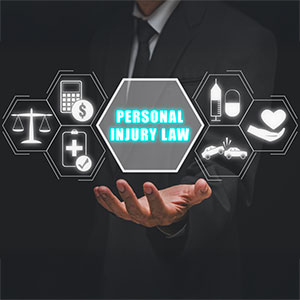Pre-Injury Releases For Children’s Claims In Florida
I signed a pre-injury release (or waiver) for my child in order to participate in an activity and then my child got hurt. Does that pre-injury waiver prevent me from suing?
The answer to whether you can sue on behalf of your child for injuries sustained in an activity depends on several things. We will first take a look at existing Florida statutes on the issue and then we will look at cases that have been decided.
Read The Statutes First
The first place to look in answering the question of whether a pre-injury release or waiver signed by a parent will be effective is to look at the law as it was passed by the Legislature.
Section 744.301, Fla. Stat. says that a parent can waive a child’s claim for personal injury if it involves the “inherent risk” of the activity. However, the promoters of the activity must have the parent sign the language contained in the statute below in order to have an effective release. The relevant portion of the statute is lengthy and quoted below (this statute was amended in 2015):
(3) In addition to the authority granted in subsection (2), natural guardians are authorized, on behalf of any of their minor children, to waive and release, in advance, any claim or cause of action against a commercial activity provider, or its owners, affiliates, employees, or agents, which would accrue to a minor child for personal injury, including death, and property damage resulting from an inherent risk in the activity.
(a) As used in this subsection, the term “inherent risk” means those dangers or conditions, known or unknown, which are characteristic of, intrinsic to, or an integral part of the activity and which are not eliminated even if the activity provider acts with due care in a reasonably prudent manner. The term includes, but is not limited to:
1. The failure by the activity provider to warn the natural guardian or minor child of an inherent risk; and
2. The risk that the minor child or another participant in the activity may act in a negligent or intentional manner and contribute to the injury or death of the minor child. A participant does not include the activity provider or its owners, affiliates, employees, or agents.
(b) To be enforceable, a waiver or release executed under this subsection must, at a minimum, include the following statement in uppercase type that is at least 5 points larger than, and clearly distinguishable from, the rest of the text of the waiver or release:
NOTICE TO THE MINOR CHILD’S NATURAL GUARDIAN
READ THIS FORM COMPLETELY AND CAREFULLY. YOU ARE AGREEING TO LET YOUR MINOR CHILD ENGAGE IN A POTENTIALLY DANGEROUS ACTIVITY. YOU ARE AGREEING THAT, EVEN IF (name of released party or parties) USES REASONABLE CARE IN PROVIDING THIS ACTIVITY, THERE IS A CHANCE YOUR CHILD MAY BE SERIOUSLY INJURED OR KILLED BY PARTICIPATING IN THIS ACTIVITY BECAUSE THERE ARE CERTAIN DANGERS INHERENT IN THE ACTIVITY WHICH CANNOT BE AVOIDED OR ELIMINATED. BY SIGNING THIS FORM YOU ARE GIVING UP YOUR CHILD’S RIGHT AND YOUR RIGHT TO RECOVER FROM (name of released party or parties) IN A LAWSUIT FOR ANY PERSONAL INJURY, INCLUDING DEATH, TO YOUR CHILD OR ANY PROPERTY DAMAGE THAT RESULTS FROM THE RISKS THAT ARE A NATURAL PART OF THE ACTIVITY. YOU HAVE THE RIGHT TO REFUSE TO SIGN THIS FORM, AND (name of released party or parties) HAS THE RIGHT TO REFUSE TO LET YOUR CHILD PARTICIPATE IF YOU DO NOT SIGN THIS FORM.
(c) If a waiver or release complies with paragraph (b) and waives no more than allowed under this subsection, there is a rebuttable presumption that the waiver or release is valid and that any injury or damage to the minor child arose from the inherent risk involved in the activity.
1. To rebut the presumption that the waiver or release is valid, a claimant must demonstrate by a preponderance of the evidence that the waiver or release does not comply with this subsection.
2. To rebut the presumption that the injury or damage to the minor child arose from an inherent risk involved in the activity, a claimant must demonstrate by clear and convincing evidence that the conduct, condition, or other cause resulting in the injury or damage was not an inherent risk of the activity.
3. If a presumption under this paragraph is rebutted, liability and compensatory damages must be established by a preponderance of the evidence.
(d) Nothing in this subsection limits the ability of natural guardians, on behalf of any of their minor children, to waive and release, in advance, any claim or cause of action against a noncommercial activity provider, or its owners, affiliates, employees, or agents, to the extent authorized by common law.
Section 744.301 has been amended several times and sometimes in response to judicial decisions that have interpreted the law.
Claire’s Boutiques v. Locastro
A recent development in Florida case law on this subject is the case of Claire’s Boutiques, Inc. v. Locastro, 4D09-968 (Fla. 4th DCA 2011). Keep in mind that Claire’s Boutiques v. Locastro was decided before the 2015 amendment to the statute, however, the policy issues stated by the court remain relevant today.
Locastro sued Claire’s Boutiques after her 13-year-old daughter developed a bad infection in the cartilage of her ear after getting her ears pierced. The child’s ear eventually sustained permanent disfigurement. Claire’s defended the lawsuit by asserting that Ms. Locastro had signed a disclosure and release form that waived her child’s injury claim. Such agreement also required Ms. Locastro to “indemnify” Claire’s for anything arising from any injury claim that is made. This means that the parent was agreeing to pay for anything that Claire’s becomes legally obligated to pay arising from the incident.
So What Did The Court Have To Say About This?
Florida’s Fourth DCA clearly responded to these contract terms by stating:
A parent’s indemnification of a third party for the third party’s negligent conduct causing injury to the parent’s child violates public policy.
Therefore, if the pre-injury release or waiver that you signed for your child contains any agreement to “indemnify” or “hold harmless” the promoter for the activity where your child was injured, then you likely have a defective agreement.
The Cases Involve “Commercial Activity”
As mentioned above, Claire’s Boutiques v. Locastro was decided under the 2010 revision of the statute and not the 2015 version. Both versions of the statute require that the activity promoter be a “commercial activity.” In other words, if a charity or volunteer organization requests that you sign a pre-injury or release on behalf of your child, then the language in the statute is not required (please note—you still might need to challenge a pre-injury waiver from a charity or volunteer organization in order to access insurance coverage).
If you have a case involving a charity or volunteer organization, your attorney may need to make an attempt to challenge the pre-injury waiver or release on other grounds as outlined in Kirton v. Fields.
The Florida Legislature’s Response To Kirton v. Fields
Section 744.301, Fla. Stat. was amended after the Florida Supreme Court decided Kirton v. Fields, 997 So. 2d 349 (Fla. 2008). In Kirton v. Fields, a child died as a result of an ATV accident at a facility where the operators allowed children to operate ATV’s. The Florida Supreme Court made the following statements in the Kirton decision that are very important statements of public policy that still need to be tested following the amendment of the statute (this is why the Kirton case has been “superseded” by the statutory amendment):
A parent does not have the authority to execute a pre-injury release on behalf of a minor child when the release involves participation in a commercial activity.
Business owners owe their patrons a duty of reasonable care and to maintain a safe environment for the activity they provide. If pre-injury releases were permitted for commercial establishments, the incentive to take reasonable precautions to protect the safety of minor children would be removed. Moreover, as a provider of the activity, a commercial business can take precautions to ensure the child’s safety and insure itself when a minor child is injured while participating in the activity. On the other hand, a minor child cannot insure himself or herself against the risks involved in participating in that activity.
The operator of a commercial recreational enterprise can inspect the premises for unsafe conditions, train his or her employees with regard to the facility’s proper operation, and regulate the types of activities permitted to occur. Such an operator also can obtain insurance and spread the costs of insurance among its customers. Children, on the other hand, are not in a position to discover hazardous conditions or insure against risks. Moreover, the expectation that a commercial facility will be reasonably safe to do that which is within the scope of the invitation, is especially important where the facility’s patrons are minor children.
These are all profound legal statements and, despite the fact that Kirton has been “superseded” by a statutory amendment, these same legal arguments can still be made and a constitutional challenge to section 744.301, Fla. Stat. (2015) may be in order in an appropriate case. Whether your case has the ability to challenge the validity of the statute is a question for your attorney and may be impacted by the political environment at the time of your case.
Negligence Is Always Required
If you have a child who has sustained a serious injury, particularly one involving paralysis or death, then you may need to make a legal challenge to the pre-injury release regardless of the statutory or case law (remember that section 744.301 only applies to “inherent risks” of an activity and not “negligence.”). Public policy decisions are often made by the courts in factually compelling cases. Regardless of how compelling an injury may be, your case must involve a degree of comparative fault on the operator of the facility as in Kendrick v. Ed’s Beach Service, Inc. 577 So. 2d 936 (Fla. 1991) in order for there to be legal liability.
In Kendrick, a guest became paralyzed after driving into shallow water at a hotel pool. Despite the open an obvious nature of diving into a pool, the issue in these cases is often whether the facility owner or operator has any degree of comparative fault in causing the injury. For instance, if building codes require warning signs for no diving and the depth of the pool at a certain place and such markings are missing, then the owner or operator of such a pool may be negligent even though a prudent person would normally familiarize themselves with the area before they jump. How much liability is there is a question for the jury.
What Should You Do If You Have A Child Who Sustained An Injury?
If your child has sustained a serious injury, then you, as the parent, have a moral to seek legal advice as to what the legal options are under the circumstances. While every case has its own set of facts, talking to a Florida personal injury lawyer about what happened should help you determine whether your Florida personal injury case has legal merit.
If you have a child who suffered an injury in Polk County, Florida including Lakeland and Winter Haven, then you should contact us for a free consultation with an attorney.


